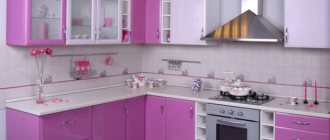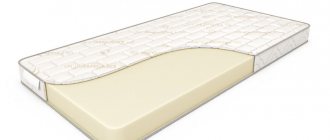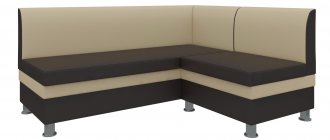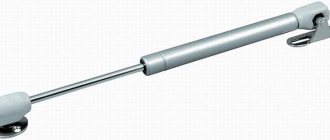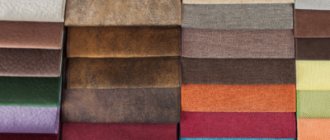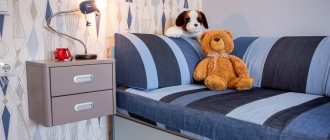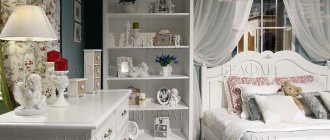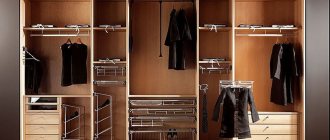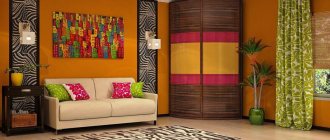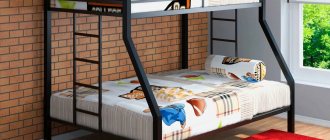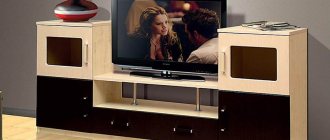Description and composition of foam rubber
Foam rubber is a soft material that is part of the group of gas-filled plastics and is made of polyurethane foam, which is 90% air. To make it, synthetic components are mixed. They interact with each other, foam, then harden.
The resulting material has a fine-cell structure, retains its shape well, is not subject to deformation, is easily restored after compression, is resistant to stains, durable and hypoallergenic.
In the 80s, polyurethane foam was supplied by a Norwegian company called “Porolon”. The proper name has become a common noun. PPU is the material itself, and foam rubber is the name of the company that produced it, but no one remembers this difference for a long time.
Main properties of polyurethane foam:
- elasticity;
- breathability;
- insulating abilities.
The material acts as a substitute for feathers and down in mattresses, scraps of fabric in pillows, blankets, toys, and foam in packaging.
Depending on the composition and types of production process, such properties of foam rubber as density, elasticity, elasticity, strength may change. The industry produces dozens of types of polyurethane foam, which differ in characteristics:
- Densities. Measured in kg per m3. The elasticity, softness and service life of the material depend on it.
- Rigidity. It is measured in kPa (kilopascals). Determines the amount of force required to compress a material by 40%.
- Fortresses. Shows the tensile strength of this brand of polyurethane foam. The higher the strength, the stronger the material.
- Elasticity. High values indicate that the brand of foam rubber has greater softness.
- Residual deformation. To determine the foam, it is compressed to 50% of its original size, moistened, and heated. Then the impact is stopped and it is determined how much the parameters of the original material and that which was subjected to deformation have changed.
- Convenience. Calculated from 2 coefficients. “Support” is how evenly the load is distributed over the entire surface, and “comfort” is the softness of the material.
Polyurethane foam is produced in various sizes and shapes. More often you can find sheet foam rubber with a thickness of 5 mm to 1 m. Block and roll types are less commonly used.
Main quality indicators of furniture foam rubber
The quality and purpose of foam rubber is influenced by its following physical properties:
- density, the higher the density of the foam rubber, the longer its service life;
- compressive stress, the magnitude of the force in kPa to compress the sample by 40%;
- strength, tensile strength and elongation at break;
- elasticity, a value inversely proportional to stiffness, measured by the height of the rebound during testing;
- residual deformation, the ability to return to its original state after removing the load; the higher the density, the lower the residual deformation;
- comfort, comfort and support coefficients - softness with low compression and ability to distribute load accordingly.
In the designation of foam rubber brands, the letters indicate the class of the material, the first two digits are its density, the remaining two digits are the compression stress.
Using the EL 2535 brand as an example, we can say that the material has the following properties:
- EL – high-hardness grade;
- 25 – density 25 kg/m. cubic;
- 35 – compression stress 3.5 kPa;
Types of material
According to their characteristics, foam rubber is divided into the following types:
- thin – thickness 2–3 cm, most vulnerable to deformation, breaks under light load;
- thick - can be either 10 or 120 cm thick, which affects its strength;
- orthopedic, or with memory effect - used for the manufacture of special mattresses that retain the shape of the body;
- acoustic – characterized by a high ability to absorb sounds, available with a textured or smooth surface;
- reticulated - a material of increased porosity due to open rather than closed structural cells;
- secondary foaming - made from waste, has good soundproofing properties, and is durable.
Furniture foam rubber - what density and thickness is needed for a comfortable sofa:
- thickness - from 4 cm, with a rigid base - closer to 10 cm;
- The density of foam rubber for furniture is at least 28 kg/m3.
When purchasing, you should pay attention to the composition and the presence of additives. For allergy sufferers and children, their quantity should be minimal. Sleeping on foam rubber is not harmful if it does not contain low-quality components.
The characteristics of foam rubber in products are indicated by letter markings indicating its rigidity. This designation is convenient for sellers and buyers.
To view an overview of the lining material:
Standard
Denoted by the letters ST. Density from 25 to 30 kg/m3. A base material to which inclusions are added to give it softness, hardness or elasticity.
Increased rigidity
EL, its density is 30 kg/m3. Mattresses and seats for sofas are made from it. Withstands heavy loads.
Hard
Hard, or HL. This is a fairly rigid material that can withstand a load of up to 100 kg, its density is from 25 to 40 kg/m3. Not used for children's furniture, as the product will be too hard.
Soft
H.S. Used in combination with a denser base. It is considered the most plastic among all varieties. With its help, maximum comfort is achieved. If such a filler is used independently, the load should not be more than 60 kg.
Highly elastic
The main application is mattresses. Characteristics of foam rubber:
- labeled as HR;
- density from 30 kg/m3;
- combines rigidity and good load-bearing capacity;
- can withstand up to 100 kg.
Another name is latex. Fully returns to shape after cessation of exposure.
Highly elastic with increased comfort
Material with a density in the range of 35–55 kg/m3. Used in the furniture industry to create high-quality products. Marked as HR*.
Watch a video about testing markings for elasticity and strength:
High-rigidity foam rubber: EL and HL grade groups
When they want to make foam rubber especially hard and elastic, additional elements are added to the mass, and this dependence collapses. For example, adding a polymer polyol at a density of 22 kg/m3 can give a hardness of 4 kPa. Such indicators bring foam rubber from the ST series (standard) to the EL (enhanced loadbearing) category.
If, at the same density indicators, the rigidity becomes even higher, the material will shift to the HL (high loadbearing) category. Foam rubber of these brands does not sag or wrinkle under a load of over 120 kg. It can be successfully used:
- for cushioning shoe soles in sneakers,
- as an elastic filler for sofas and chair-beds,
- for heat and sound insulation of rooms, cars, vans and containers.
Advantages and disadvantages of foam rubber
Pros of foam rubber:
- absence of toxic substances in the composition;
- hypoallergenic;
- moisture resistance;
- maintaining its technical characteristics over a wide temperature range – from -40 to +90 °C;
- excellent sound insulation;
- elasticity and softness;
- no deformation when exposed to heavy weight;
- the ability to quickly restore its previous shape after compression;
- durability;
- low cost.
Flaws:
- release of toxic substances during combustion;
- Limiting the service life of the material to 8–10 years with daily intensive use.
See the review from the mattress manufacturer:
Material care
Improper use leads to deformation and thinning of the material. Rules of care:
- do not keep close to heating devices or fireplaces;
- do not iron (except for heat-resistant brands);
- Can be dry cleaned, hand washed or machine washed.
Heavy contamination is pre-treated:
- soap;
- washing powder solution;
- dishwashing gel.
The detergent is foamed, applied to the stain, and left for 30 minutes. Then they start washing.
How to wash foam rubber in a washing machine:
- temperature not higher than +40 °C;
- do not bend the product;
- use liquid detergent;
- turn off drying;
- number of revolutions – no more than 800.
When washing by hand, the same rules are followed, but you can use washing powder after completely dissolving it in water. Afterwards, the material is rinsed 2-3 times and the soapy water is allowed to drain.
The material is carefully squeezed out without using force. Air dry or lay out on a flat surface. You can place a towel or cotton cloth - they will absorb some of the water. You cannot dry it on a radiator - the item will become deformed.
Foam accessories for the bed are washed as follows:
- pillows - in the washing machine if they fit into the drum or by hand;
- mattress - by hand;
- blanket - by hand.
Furniture, car seats, or toys may require repairs. At home, foam rubber can be glued to fabric using glue:
- "BF-6". It is safe, but requires application in 2 layers and preliminary wetting of surfaces.
- "Rapid". Does not burn, sets quickly, forms a strong seam.
- "Foam 88". Old glue on rubber, a thin layer is enough for connection.
- "Foam rubber 2". It is used in furniture production and holds parts well.
- "Olimpur". It is applied pointwise and is water-based.
- "Crystal Moment" Available for purchase, the weld strength is medium-high.
Scope of application of foam rubber
Material applied:
- for the manufacture of soft parts of furniture, mattresses;
- as thermal insulation;
- as sports equipment;
- Shoe inserts are made from the material;
- to soften the car interior;
- as packaging for household appliances;
- as a filler for soft toys.
To watch the story on how to sew linen foam:
Photo gallery of products made from the material:
Advantages of foam rubber
It would be fair to say that foam rubber is almost the most popular material in furniture production.
It is used as filling under the upholstery, giving the structure the necessary rigidity, comfort, and softness.
Foam rubber as a filler boasts the following advantages:
- universal material, suitable for different tasks;
- comfortable and convenient;
- has a small mass;
- offered in a wide range;
- easy to process with your own hands;
- suitable for repair, assembly and restoration of furniture;
- has different density parameters;
- long service life.
Polyol and various additives are used in production.
By choosing the appropriate composition, you can make a simple foam mattress yourself, or make something more serious and large-scale. For example, an accordion sofa or a full double bed with a soft headboard.
Only foam rubber whose density exceeds 25 kg/m3 is considered furniture.
All other materials are mainly used in construction, as insulation, etc.
Now let's move on to varieties.
